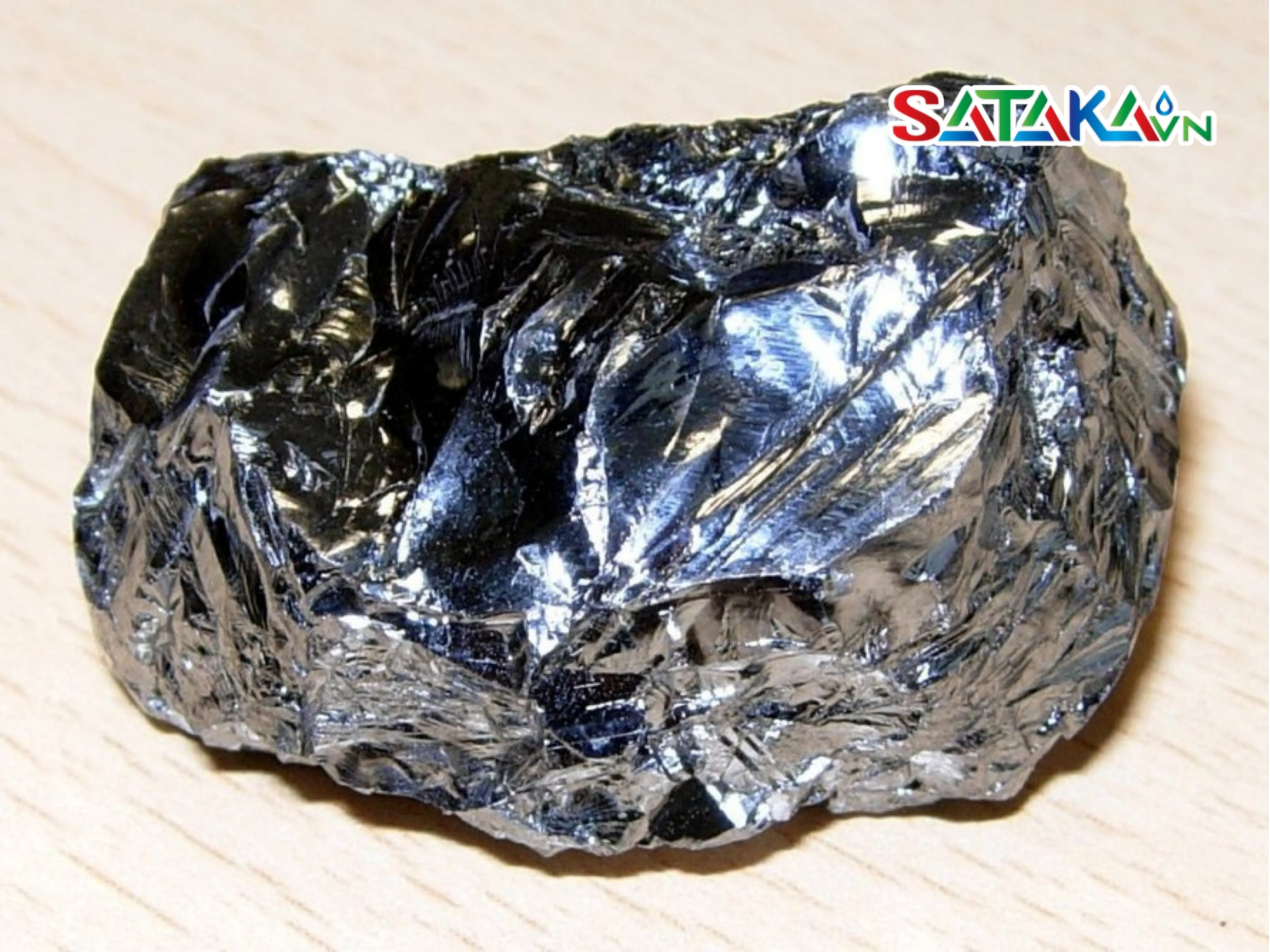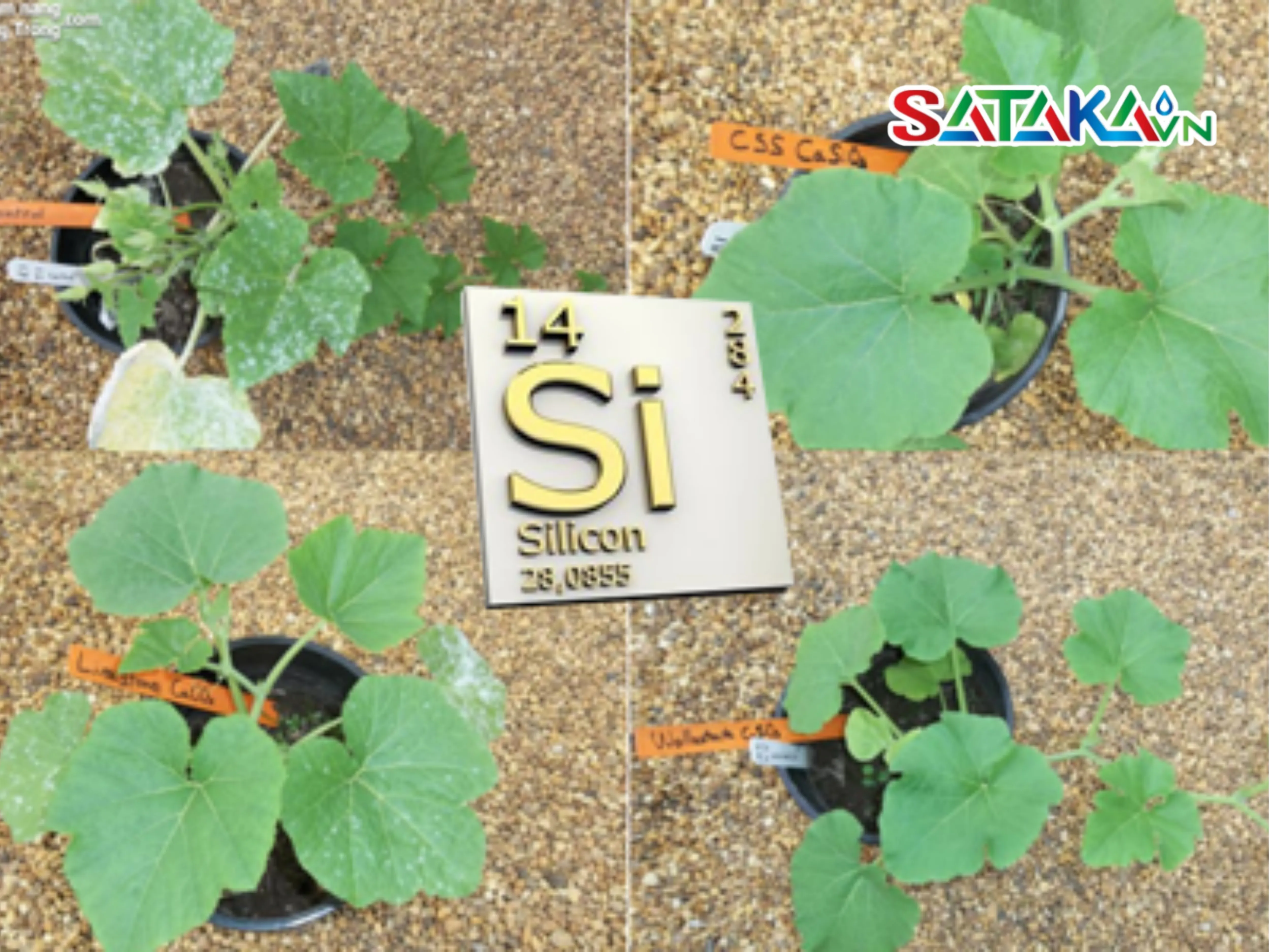Silicon plays a vital role in enhancing crop health, boosting resistance to pests and stress, and improving yield quality. For sustainable agriculture, Sataka highlights the importance of Silicon in strengthening plants, enriching soil, and supporting long-term productivity for farmers and the environment.
Silicon (Si) is a micronutrient that plays an important role in the development of many crops, especially rice. Although not classified as an essential element, The Role of Silicon in crops has been increasingly confirmed through numerous scientific studies. Silicon strengthens plant resistance against unfavorable conditions, improves photosynthetic efficiency, and significantly boosts crop yields. Let’s explore in detail the importance of Silicon and how to apply it effectively in modern agricultural practices.
Silicon is the second most abundant element in the Earth’s crust, accounting for about 28% of its mass. In soil, Silicon mainly exists as silicic acid (H₄SiO₄), the soluble form that plants can absorb. While not part of the traditionally recognized essential nutrients, many studies have demonstrated that Silicon has an irreplaceable role for many crops.
Silicon is actively absorbed by roots as silicic acid. Once inside the plant, it moves through the xylem and accumulates in epidermal tissues, forming a silica gel (SiO₂·nH₂O) layer beneath the cuticle. Particularly, in grasses (Poaceae), the Silicon content can reach up to 10% of the plant’s dry weight.
Crops are classified by their ability to accumulate Silicon:

What is Silicon and Its Importance in Agriculture.
Silicon provides diverse benefits to plant development, from strengthening physical structure to enhancing resistance against biotic and abiotic stresses.
When absorbed, Silicon forms a silica gel layer beneath the cuticle of epidermal cells, creating a “biological armor” for the plant. This mechanism provides:
A study on rice showed that Silicon supplementation reduced lodging rates by up to 40% and improved resistance against brown planthopper, stem borer, and blast disease.
Beyond physical barriers, Silicon also activates biochemical defenses:
For instance, cucumber plants treated with Silicon showed a 63% reduction in powdery mildew infection and higher protective enzyme activity.
Silicon enables plants to endure harsh environmental conditions:
Studies on rice showed that Silicon supplementation increased drought tolerance by 35% and reduced aluminum toxicity effects by 42% in acidic soils.
Silicon creates a dual defense system:
Practical evidence shows that rice fields treated with Silicon had 45–60% lower brown planthopper and stem borer infestations compared to untreated fields.

Silicon Helps Plants Cope with Stress Conditions.
Silicon contributes to yield enhancement by:
Field trials show:
Silicon also improves produce quality:
In tomato studies, Silicon treatment produced firmer fruits, 30% longer shelf life, and 25% lower post-harvest rot rates.
Common Silicon fertilizers include:
Dosages and timing for some crops:
|
Crop |
Dosage (kg/ha) |
Application Time |
|
Rice |
300–500 |
Before transplanting & tillering stage |
|
Maize |
200–300 |
At 20–25 cm height & before tasseling |
|
Vegetables |
150–250 |
After seedling establishment |
To maximize benefits, farmers should:
See more: Preventing Lotus Anthracnose in Humid Rainy Seasons.
Amid climate change, The Role of Silicon is even more critical:
Research directions are expanding:
The Role of Silicon in crops has been strongly validated through science. From strengthening mechanical structure, activating defense systems, improving stress tolerance, to enhancing yield, Silicon has proven to be indispensable in sustainable agriculture.
Applying Silicon not only provides direct economic benefits—higher yields, lower input costs—but also contributes to long-term agricultural sustainability, particularly in the face of climate change. It is time we pay greater attention to this “multi-functional element” in future agricultural strategies.
SATAKA – Effective Silicon Supplement Solutions for Crops: With advanced technology and specialized formulas, SATAKA provides products that help plants easily absorb Silicon, boosting resistance, yield, and quality. Join SATAKA to build green – safe – sustainable harvests.
📍 Address: 246 Nguyen Kim Cuong St., Tan Thanh Dong Commune, Cu Chi District, Ho Chi Minh City
📞 Hotline: 0856.555.585 | 0789.917.927
🌐 Website: https://sataka.com.vn/